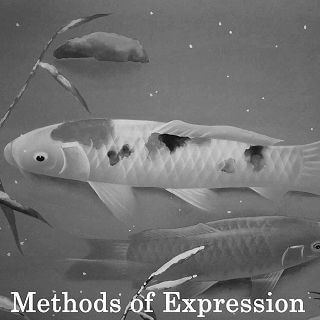Lesson
News / Blog
Other Menus
Nihonga Art History
History
Paintings, using the techniques and styles derived from China and the Korean Peninsula, were called “Kara-e” (Chinese Paintings) from the Nara period through to the Heian period. By comparison, paintings with Japanese themes were called “Yamato-e.” Subsequently, some terms, such as “Kanga” (Chinese painting) compared with “Waga” (Japanese painting), or “Kara-e” compared with “Waga,” varied according to the era. However, the trend to consider those paintings and techniques from the past as traditional Japanese, in comparison with the new styles imported from overseas, has continued.
The term “Nihonga” (Japanese-style painting) came into use in the beginning of the Meiji period, to distinguish painting styles which had already existed from Western style oil painting (or “Youga”) imported from Europe at that time.
In 1876, at the beginning of the Meiji period, in order to promote the study of Western Art, the Meiji government established an art school, and invited Antonio Fontanesi from Italy to teach. Tadashi ASAI, and other students, were members of the inaugural class. Fontanesi went back to Italy two years later, in 1878. Meanwhile, Ernest Fenollosa came to Japan and taught philosophy, along with other subjects, at Tokyo University.
It is well-known that Fenollosa showed a strong interest in Japanese art, and praised it highly. The word “Nihonga” was adopted from the translation of term “Japanese painting” for the first time when Fenollosa gave his lecture on “The New Theory of Art” at the Dragon Pond Society (“Ryuuchikai”) in 1882. In the lecture, Fenollosa pointed out the following as characteristics of Nihonga and evaluated its excellence.
No.1 It does not seek realism, as in a photograph.
No.2 It does not have shadows.
No.3 It has an outline.
No.4 The color tone is not rich.
No.5 The expression is simple.
Kakusan (later called Tenshin) Okakura, who worked as an interpreter and assistant for Fenollosa, was much encouraged by this experience and, in 1889, established The Tokyo Art School (later Tokyo Art University). It did not teach Western painting, but had only a Nihonga faculty with teachers including Gahou Hashimoto. Taikan Yokoyama was one of the inaugural class members.
By 1883, the art school (“Koubu Bijutsu Gakkou”), which taught Western painting, had been closed.
Okakura was inaugurated as the head of the Tokyo Art School in 1890, but was forced out of the school in 1898. He then, with Yokoyama, established The Japan Art Academy.
The Nihonga which Okakura intended to foster was not just preserving traditional Japanese technique and style, but also brought in some necessary Western techniques, aiming to create Japanese paintings which could hold their own against Western paintings. Gahou Hashimoto, while being from the Kanou School, with Hougai Kanou as his senior pupil, was a painter who sought to develop his own style; similarly, Yokoyama also developed new techniques.
It is thought that the term Nihonga, used by Fenollosa for the first time, did not simply refer to all paintings existing in Japan prior to the arrival of Western oil painting, but more specifically, to the style which had roots in China and the Korean Peninsula, but developed independently and matured in Japan. However, the Nihonga then established and fostered by Okakura and others, up until the present, has continued to develop as a rival force to Youga. In that sense, Nihonga is defined as those created after the Meiji period, which means that Taikan Yokoyama of the Meiji period was classified as a painter of Nihonga, but the Edo period painter Eitoku Kanou was not.
The Boston Museum of Fine Arts was established in 1876, after the United States had gained independence from England, and was becoming more stable after the Civil War. In 1890, Fenollosa, after returning to the United States from Japan, Fenollosa was installed as the first head of the Japanese Art Division of the Boston Museum of Fine Arts. In 1910, Okakura succeeded him as head of the Oriental Division.
Since then, Youga and Nihonga have continued their symbiotic relationship, coexisting and developing as rival forces in Japan. In many cases, Nihonga artists also adopted realistic Western painting techniques, such as perspective and shading. Because of this tendency to synthesize in recent years, although Nihonga forms a distinct category within the Japanese annual Nitten exhibitions, it has become increasingly difficult to draw a distinct separation in either techniques or materials between Nihonga and Youga. However, in the “kakejiku” (hanging scroll) painting style, we believe that the traditional Nihonga is still being succeeded, even until now.
 |
 |
 |


